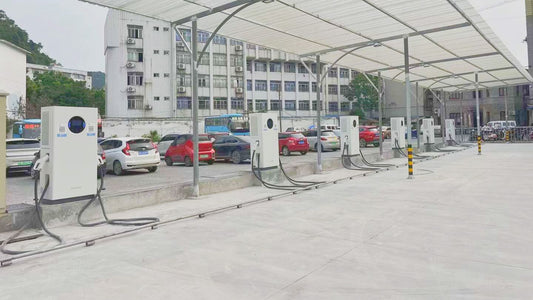How to charger your electric vehicle properly? Can you charger your electric car just like the way you charger your mobile phone? What’s the charging frequency? Should you charge the car when the SOC(state of charge) of the car battery is lower than 20%?
Many car owners might be confused about the charging frequency when they get the first electric car.The following scenarios are likely familiar to many electric car owners:
- Running out of battery power just before reaching a charging station, ending up waiting for a tow truck.
- Feeling anxious when the remaining battery level drops below 50%, resulting in frequent charging, which is time-consuming.
- Constantly worrying about battery safety, whether it's overcharging or over-discharging.
Firstly, we need to understand some basic knowledge about electric vehicle batteries. Currently, most electric vehicles on the market use lithium-ion batteries, which have a characteristic of not liking "extreme exercise". Simply put, they don't like being overcharged or depleted too much. This is similar to us eating; eating too much will make us feel bloated, while eating too little will leave us hungry. In essence, it's about moderation.
Before discussing the appropriate timing for charging, we need to understand two professional terms: deep discharge and deep charge.
Deep discharge refers to the state where the battery's charge is depleted to near-zero, while deep charge refers to charging the battery to nearly full capacity. Both of these states impose significant stress on the battery, much like prolonged starvation or binge-eating is harmful to the body.
So, when is the most suitable time to charge?
The ideal charging time is when the battery level drops to between 20% and 30%. Why this range? Because within this range, lithium-ion batteries can avoid the damage caused by deep discharge while ensuring there is enough capacity for effective charging. At the same time, it's not recommended to frequently charge the battery to 100%. Keeping it around 80% is a more ideal choice. This is similar to eating; being seven-tenths full is the healthiest option.
However, life is full of uncertainties, and sometimes you may have to perform deep discharge or deep charge. In such situations, there's no need to be overly anxious. The occasional "extreme exercise" has limited impact on the battery. The key is not to let it become a habit. Just like indulging in a big meal or heavy drinking occasionally won't directly affect your health, but if done daily, it can lead to problems.
In addition, here are a few more tips to help with your car battery maintenance:
- Avoid charging in high-temperature environments. High temperatures can accelerate battery aging.
- Charge your car battery appropriately and avoid fully discharging. You’d better charge the car when the car battery capacity drops to between 20% and 80%. Fully discharging may both potentially harm the battery.
- When not using the vehicle for extended periods, it's best to maintain the battery level at around 50%. Just like not exercising for a long time, we also need some activity to maintain our physical condition.
- Regularly check the battery status and Battery Management System (BMS). Ensure all components are functioning properly.
- Use charging equipment and accessories recommended by the manufacturer whenever possible.
Overall, charging the batteries of electric vehicles requires moderation and a scientific approach. By adopting a reasonable charging method, we can not only extend the lifespan of the battery but also ensure the performance and safety of the vehicle.




